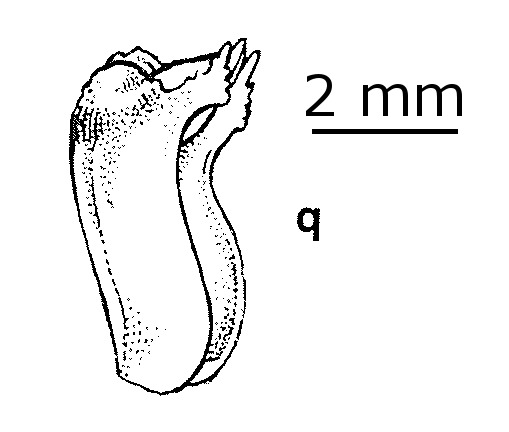Thelymitra incurva
JeanesFlowering stem erect, straight, 20–65 cm tall, 1.2–3 mm diam., straw-coloured to purplish. Leaf linear to linear-lanceolate, attenuate, 10–20 cm long, 4–9 mm wide, fleshy to leathery, canaliculate to conduplicate, ribbed abaxially, sheathing at base, dark green with a purplish base. Inflorescence 1–7-flowered, open. Sterile bracts usually 2, rarely 1 or 3. Perianth segments lanceolate to ovate, 7–12 mm long, pale blue, rarely pink, opening freely on warm days. Column slender, 4–5.5 mm long, pale blue; mid-lobe slightly hooding the anther, often bilobed, margin thickened, irregular, sometimes with a central tooth, somewhat sinuate, dorsal surface rugulose, reddish brown to almost black, apex yellow or pinkish; lateral lobes usually strongly incurved throughout, 1.5–2 mm long, fleshy, often concave, obliquely erect or porrect, pink or brownish at base, faces smooth, margins often shallowly and irrugularly erose, apices often touching below tip of anther beak, cream to yellow. Anther inserted towards apex of column, with a prominent entire or emarginate beak. Flowers Oct.–Dec.
EGL, EGU, Strz. Also NSW. Grows in heathlands and heathy woodlands mostly around the edges of grasstree plains, often in disturbed sites such as roadsides and gravel scrapes. Soils are moist coarse sandy, peaty loams.
Thelymitra incurva can be distinguished from T. alpicola by its plain, pale blue (rarely pink) flowers and strongly incurved, broad, often concave, shallowly erose lateral lobes on the column. The two species also frequent different habitats.
Known from only 6 populations and regarded as endangered.
 Spinning
Spinning

